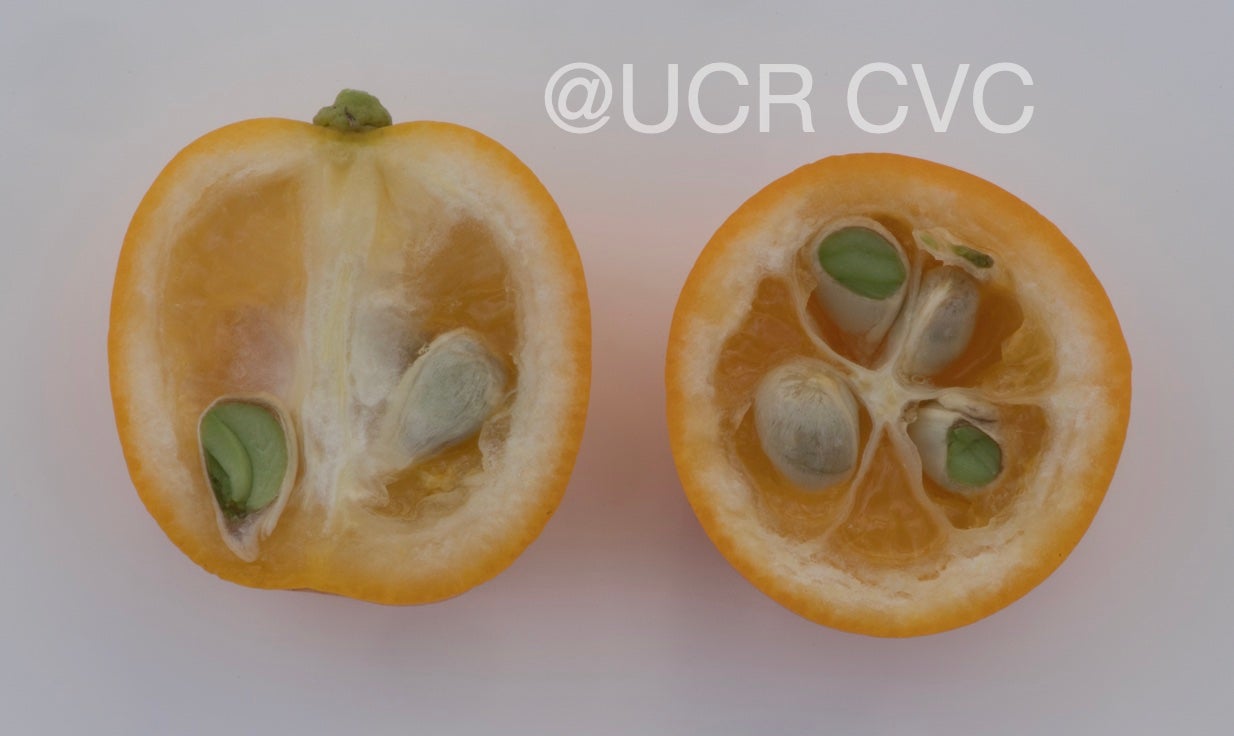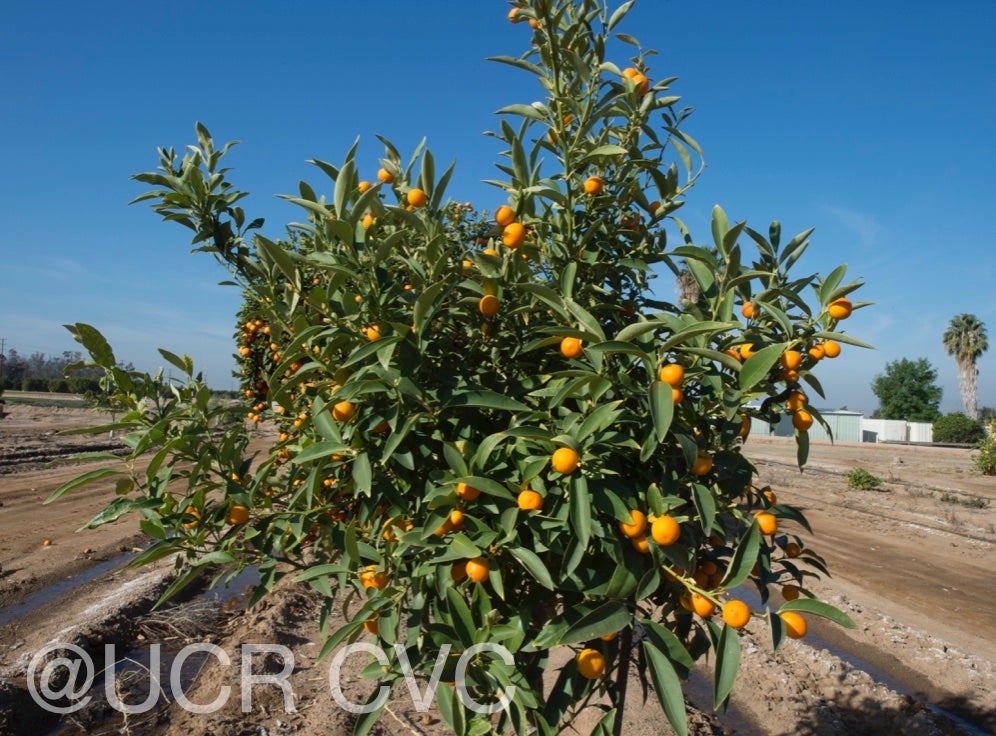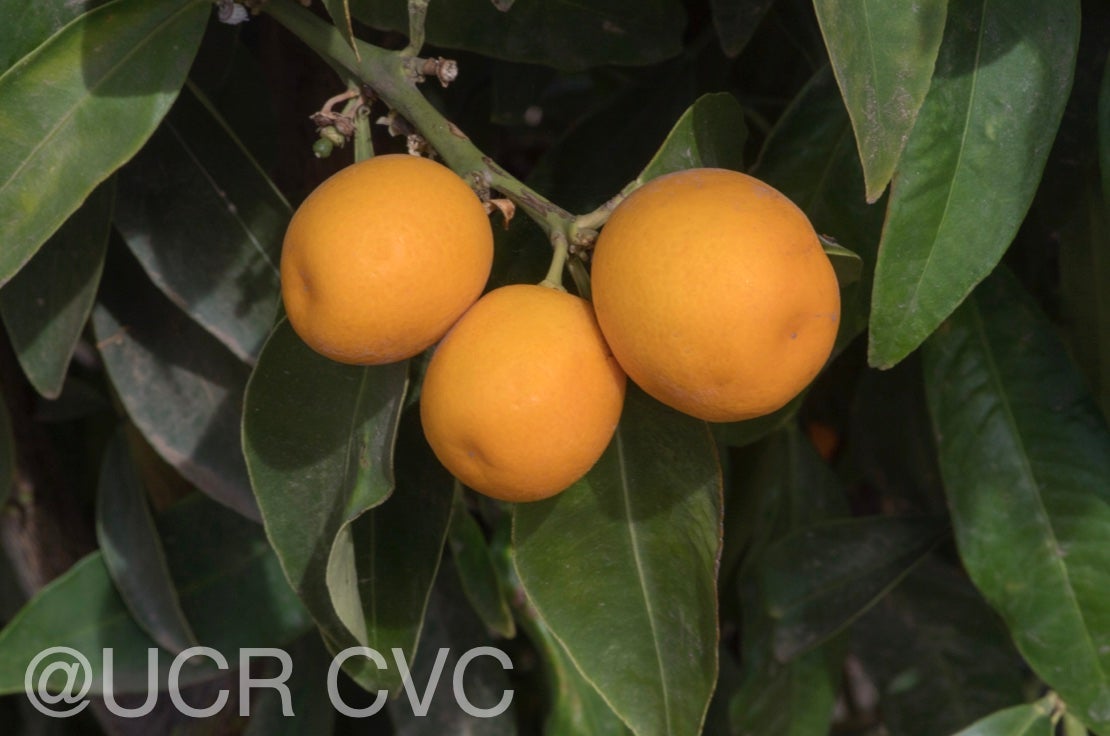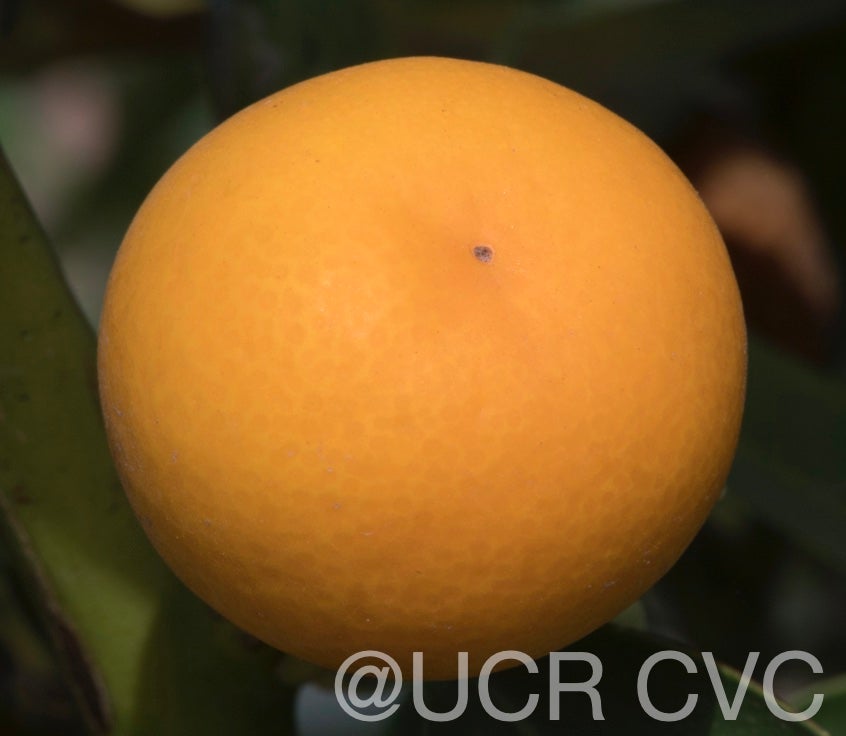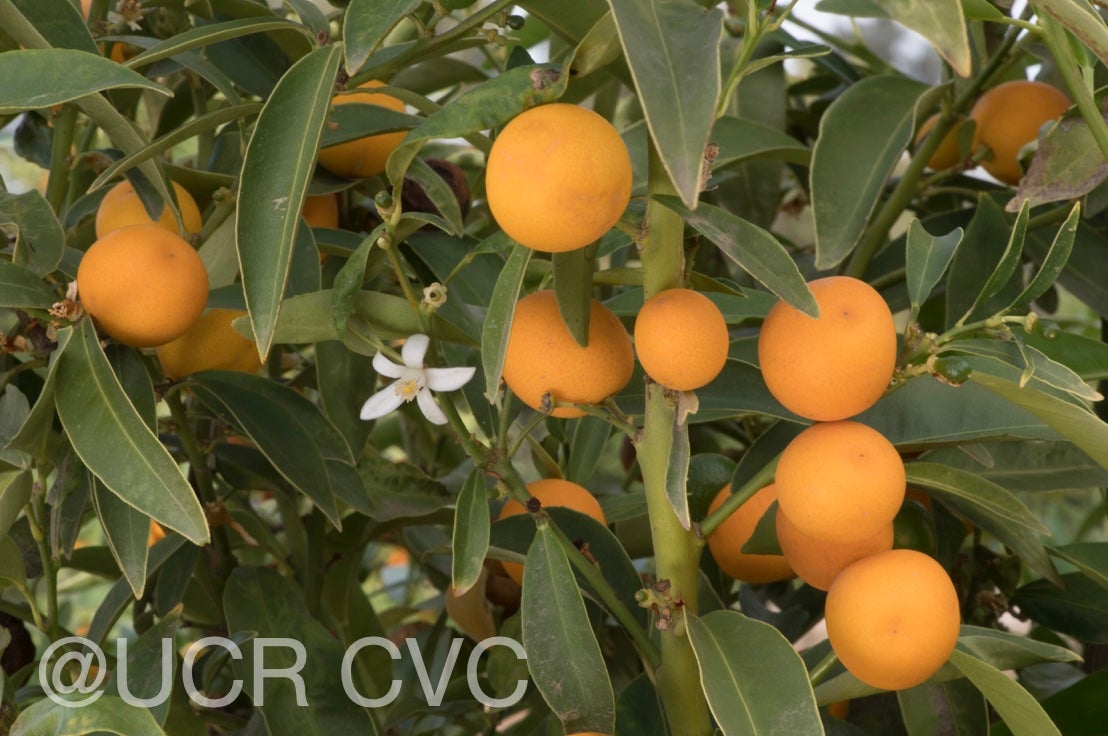Malayan
CRC 3901
PI 539731
Source
Received as seed Botanic Garden, Univ. of Kuala Lumpur, Malaysia, 1985.
Parentage/origins
Parents unknown.
Rootstocks of accession
Own roots.
Season of ripeness at Riverside
Has not been observed.
Notes and observations
Seed importation by R. Scora. This is a tropical Fortunella and may or may not survive in the field at Riverside. Decision of R. Scora
EMN, 1/1987: Keep in greenhouse & lathhouse only. Do not plant in field at Riverside.
Description from The Citrus Industry Vol. 1 (1967)
"Ridley described this species as follows, under the name Atalantia polyandra: "Unarmed glabrous bush, branchlets smooth with a ridge decurrent from the petiole; leaves thinly coriaceous, unifoliolate; leaflets lanceolate, bluntly acuminate, base narrowed; main nerves slender, about 10 pairs; intermediate nerves nearly as thick, numerous, irregular, all inarching; [leaflet] 4-6" [10-15 cm] long 1.25-2.75" [3.2-7 cm] wide; petioles 0.25 to 0.75" [6-19 mm] long, winged above; flowers few, usually 2 in an axil, pedicels 0.25" [6 mm] long; calyx lobes 5, ovate-acute, short; petals 5, linear-oblong, blunt, 0.5" [11 mm] long; stamens 24, connate, in a tube, some shorter than the others, tube nearly 0.5" [11 mm] long, cylindric; anthers small-ovoid; disc fleshy, cushion-shaped, forming a gynophore; ovary on the disc, oblong, glandular, 5-celled; style short, stout; stigma oblong, clubbed, 5-ribbed; fruit globose with numerous large glands 1.75" [4.5 cm] through (not ripe)."
In his description of Fortunella swinglei, based on a specimen from the Malay Peninsula, Tanaka stated: "fruits small, globose, 1.5 cm diam., with 5 locules; peel thin, smooth, minutely punctate; seeds ovoid, 10 X 15 mm, flattened, apex rounded, base very acute."
A kumquat collected in May, 1922, by F. A. McClure (No. C.C.C. 9449) along a woodcutters' path in dense forest on the south slope of Five Finger Mountain, now in the National Arboretum Herbarium at Washington (C.P. Or. Herb. No. 7714), was identified by Tanaka (slip SW-316) as Fortunella swinglei. The leaves are slender, lanceolate, acuminate, with the very tip emarginate; the petioles are slender, 12-14 mm long, and very narrowly winged above. Fruits are not known. It looks like the wild form from which the Malayan kumquat has been developed by culture or by hybridization.
This species is as yet inadequately known. The cultivated form common in the Malay Peninsula, where it is called limau pagar, or "hedge lime," has much larger fruits than any other species of Fortunella, and likewise a thinner peel. It may possibly prove to be a limequat, i.e., a hybrid of a Fortunella and some variety of Citrus aurantifolia, but, if so, it is abnormal in having only five locules in the ovary and only two ovules in each locule. It also has an abnormally high number of stamens, which may indicate hybridity."
Availability
Not commercially available through the Citrus Clonal Protection Program.
USDA Germplasm Resources Information Network page for Fortunella polyandra
